Another place near the top of my long long list of bucket list destinations is St. Petersburg, Russia’s second city and the “Venice of the North”. Now I’ve been to Venice a couple of times and while I enjoyed my time there and would highly recommend checking it out before the city falls prey to rising sea levels, I couldn’t help but feel as though all the Venice hype was somewhat overblown.
I’m therefore very curious to see how St. Petersburg compares. Built around the mouth of the Neva River, it seems that in addition to being an important port city and therefore steeped in the historical traditions of merchants and industry, it’s also a significant modern-day cultural centre for Russia and the wider Eastern Europe region.
I hope to make a trip to St. Petersburg soon, perhaps next year as part of the 2018 FIFA World Cup (quick tip: get yourself some World Cup tickets and you can travel to Russia without the hassle of obtaining a Russian visa), and I wanted to share some of the city’s highlights that I’m most looking forward to seeing.
A Feast of Design
Having served as the capital of the Russian Empire for two centuries under the eponymous Peter the Great, St. Petersburg boasts a wealth of dazzling palaces, churches, and galleries that eclipses most great cities across Europe. Most of the noteworthy sights – though by no means all of them – are located in the central area of the city south of the Neva River’s distinctive meander.
The city’s kingpin attraction is no doubt The Hermitage, one of the premier museums of the world. The museum is housed in the grandiose complex known as the Winter Palace, located in St. Petersburg’s central Palace Square. The scale of the palace is monumental, and its facade beyond opulent.
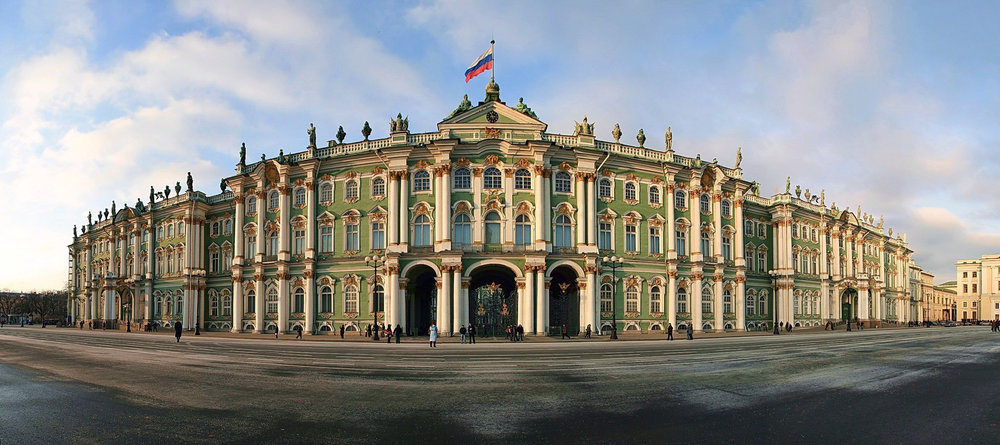
Winter Palace – Exterior
The Hermitage is home to a jaw-droppingly impressive collection of art from all over the globe. Rembrandt, Michelangelo, Picasso, Matisse, and many more great names have their work on display in these halls. Its interiors are themselves so intricate that the museum itself can be thought of as a work of art on display. And even if you aren’t an avid admirer of artwork, the Hermitage’s collection of antique items from the ancient civilizations of Egypt and Greece is certain to keep you engrossed.
The world-class museum is just the first in a long line of grand, palatial buildings worth checking out. There’s the General Staff Building enclosing the Palace Square, an architectural spectacle that typifies the sheer grandiosity of Peter the Great’s vision for Imperial Russia.
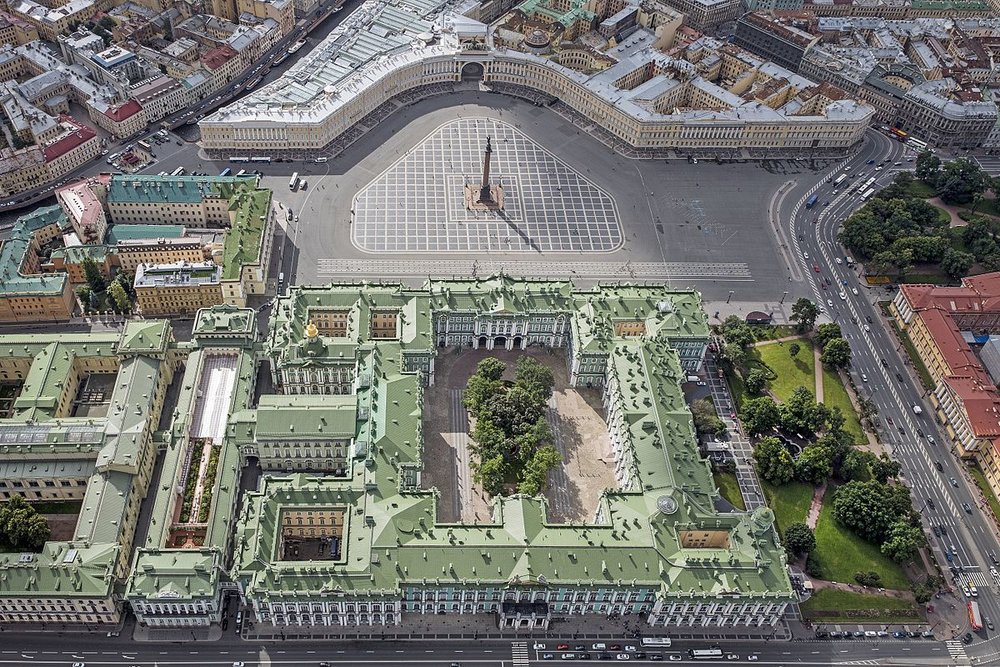
Palace Square, with the General Staff Building (top) and the Winter Palace (bottom)
Then there’s the Admiralty building and its signature tower and spire, the focal point of St. Petersburg’s three main avenues. The Empire style of architecture is on display everywhere, and you’ll be seeing intricate details and inventive designs wherever you look.
Elsewhere in the central area, St. Petersburg’s churches are well worth a visit. It’s a bit of trope these days that travelling through Europe involves a lot of looking at churches, and for some people that gets repetitive pretty fast.
Not here, though: Russia takes its religious buildings seriously, from the unmistakably Russian (both in name and design) Church on the Spilled Blood, to the fiercely imposing St. Isaac’s Cathedral, to the absolute mammoth of a structure that is the Kazan Cathedral, all adorned with incredible sculptures on the exterior and mosaics on the interior.
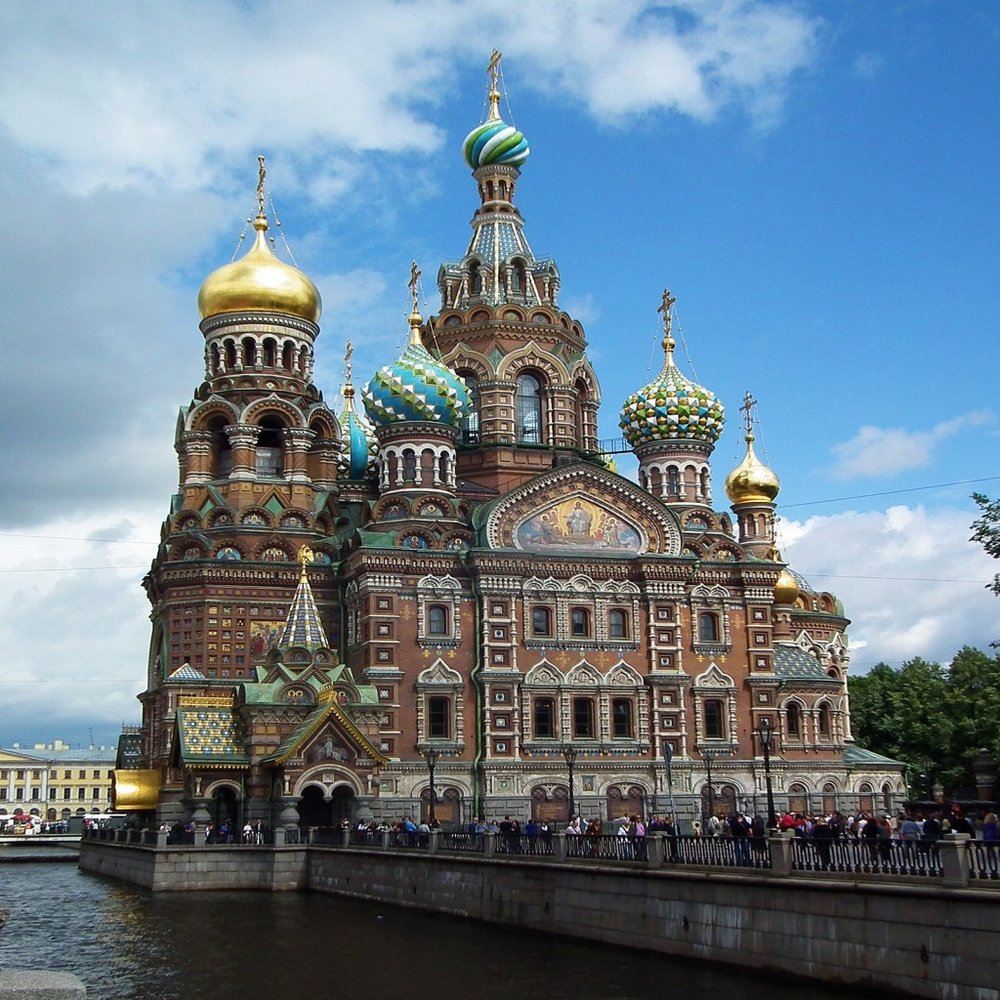
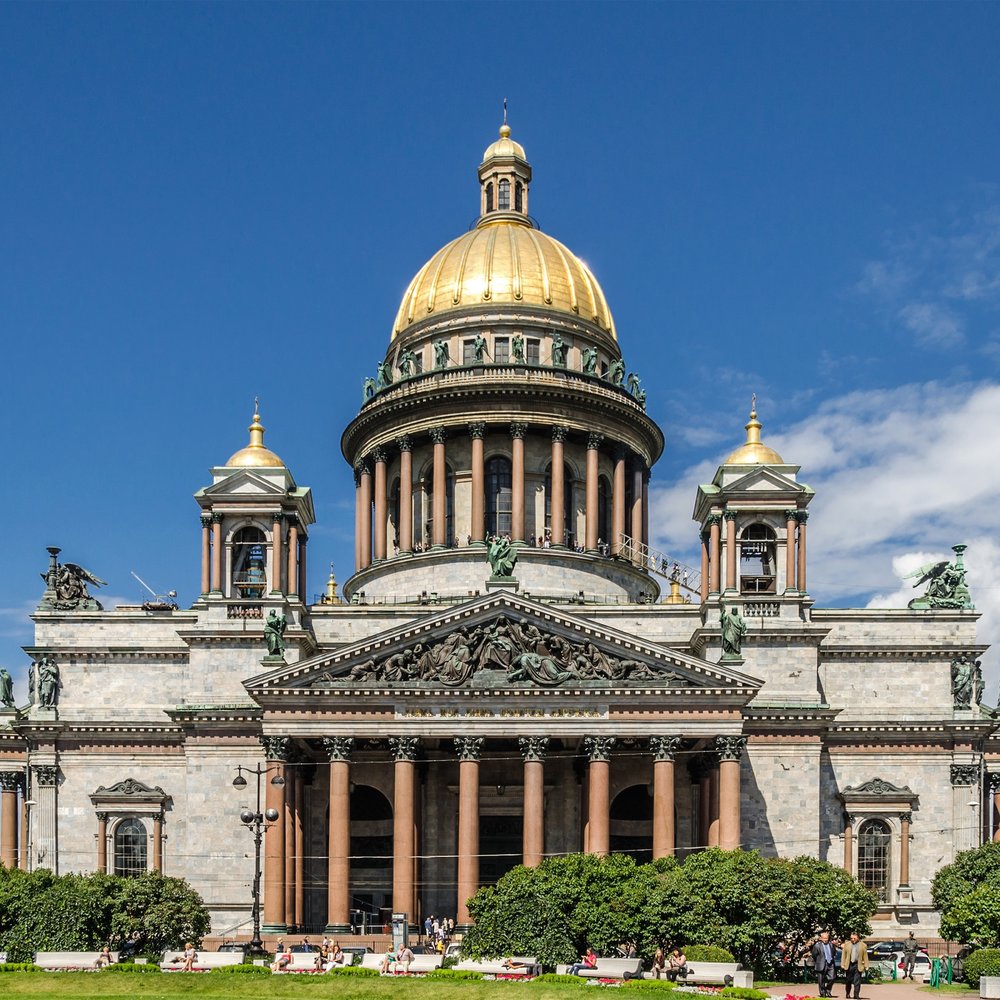
Seriously, you win, Russian Orthodox Church – I mean, how is this at all fair to other places of worship?
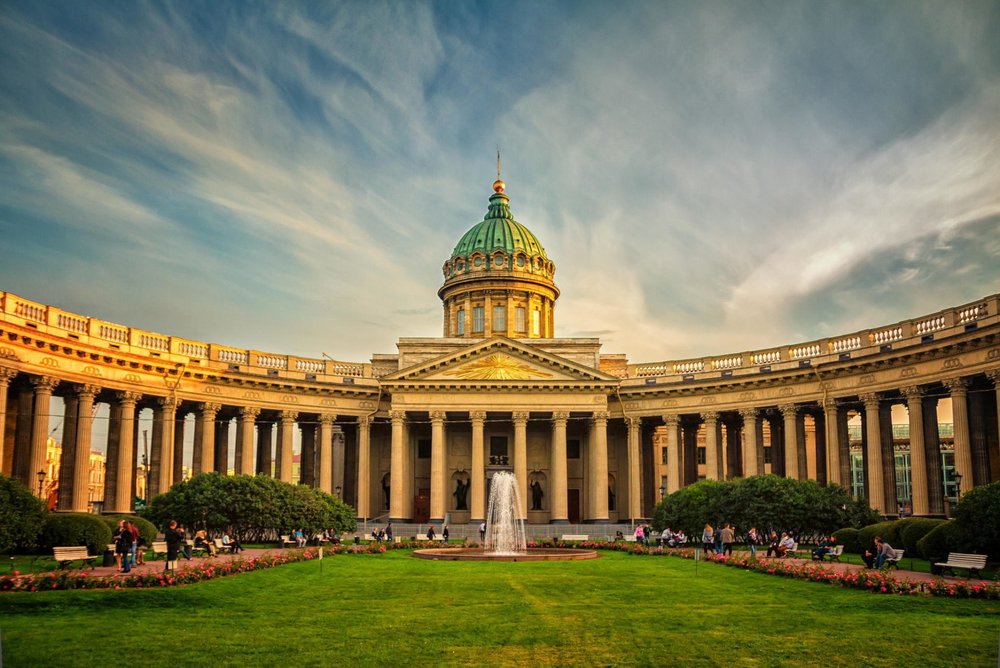
Kazan Cathedral
Other Highlights
Much of St. Petersburg’s daily life revolves around its rivers and canals – it’s the Venice of the North after all. Central St. Petersburg is transected by several smaller rivers that branch off the Neva, offering it an alternate route through to the Baltic Sea.
Chief among these are the Fontanka and Moyka Rivers, both lined with magnificent architecture on their banks, making them the ideal route along which to have a casual stroll. You can also admire the views from the waterways themselves; you can opt for either a private tour of the channels, or a ride on the city’s public waterbus transport, similar to Venice’s gondolas and vaporettos.
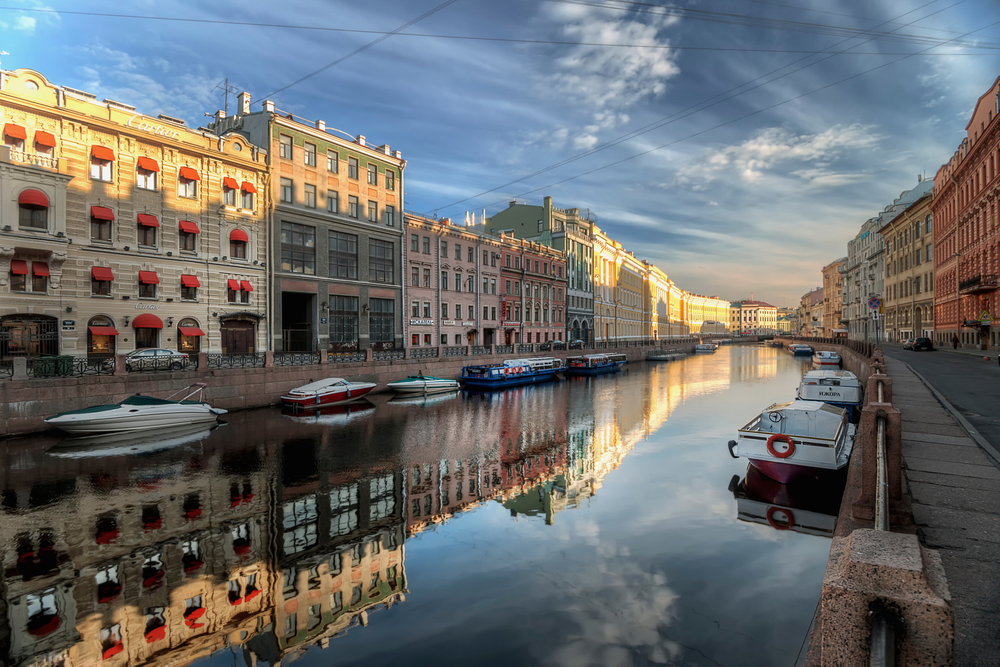
Moyka River
A city transected by rivers is also naturally home to a plethora of bridges, and you can bet that the bridge builders took inspiration of the stunning designs all around them. What’s particularly notable is that St. Petersburg’s nine low bridges are drawn during the night to allow boats and ships to pass through, which makes for an impressive sight, but means that it may be difficult to get to opposite shores in the middle of the night (and you can even get stuck on certain islands!) Read about St. Petersburg’s bridges on their official website and get a sense of when the drawing and lowering of bridges takes place.
And of course, perhaps even more so than most of Europe’s great cities, St. Petersburg is home to a wealth of museums, gardens, concert halls, theatres, and opera and ballet performances (for which the city is particularly famous). The Mariinsky Theatre is the pre-eminent venue for ballet, orchestra, and opera, and it’s definitely worth making every effort to catch a show.
It’s easy to get around using the St. Petersburg Metro, which – like just about anything in this city – has evolved into a tourist attraction on its own, because the incredible interior decorations of the stations essentially make it a giant subterranean art display. I must say that St. Petersburg residents have it pretty good with their morning commutes!
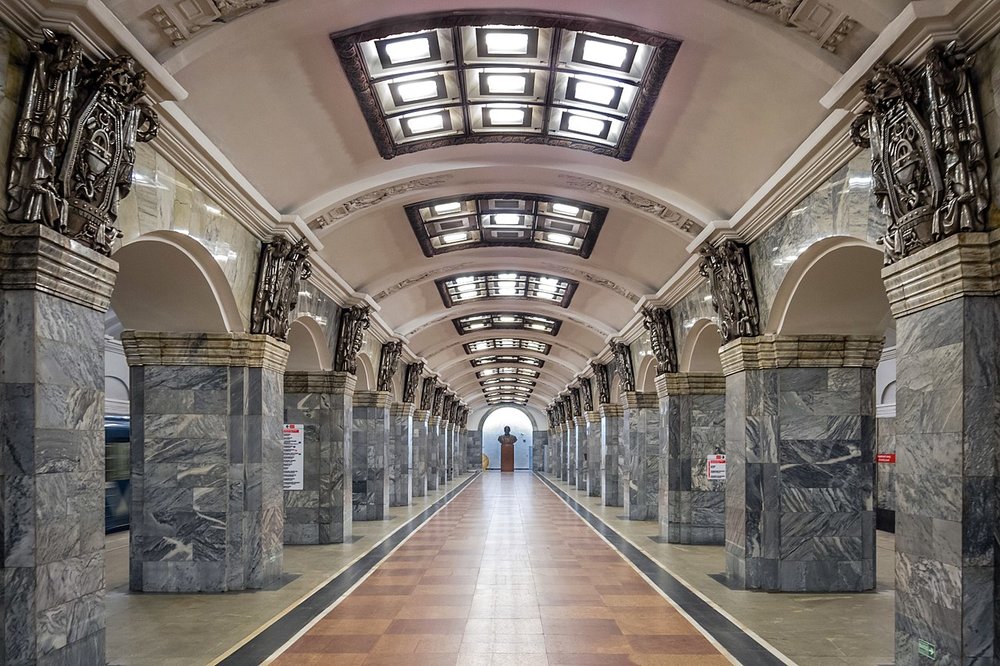
St. Petersburg Metro
Plan Your Visit
Generally Moscow is the point of entry to Russia for long-haul travel, but St. Petersburg’s Pulkovo Airport (LED) is well-served by European carriers, making it easy to get to Russia’s second city in a convenient one-stop trip.
St. Petersburg’s location also makes it conducive to being included as part of a larger Nordic trip – it’s easy to get to and from Helsinki, Finland or Tallinn, Estonia via either train or ferry (the St. Peter Line, which also allows you to enter the city visa-free if you are travelling with a tour group) which opens the door to Scandinavia and the Baltics.
Most hotels and accommodation options are located well within the central area. The Grand Hotel Europe is one of St. Petersburg’s icons, offering the best of Russian luxury and situated squarely on Nevsky Prospekt, the city’s main drag. Rates start at $370/night.
Those hoping to book a points redemption will like the look of the W St. Petersburg, where the W brand’s trademark chicness meets the romance and elegance of St. Petersburg as a whole. It’s an SPG Category 5 hotel, so a free night goes for 12,000–16,000 Starpoints. Otherwise, rates begin in the range of $210/night.
For the more budget-oriented traveller, there’s also some wonderful-looking Airbnbs that go for $50–100 a night, as well as a host of centrally-located mid-range hotels.
Conclusion
St. Petersburg is a city that captures the imagination through its world-class art, architecture, and design influences. I’m definitely hoping to spend a good chunk of time there to enjoy everything it has to offer, from charming walks along the riverbanks to the tremendous beauty of every building you see.


